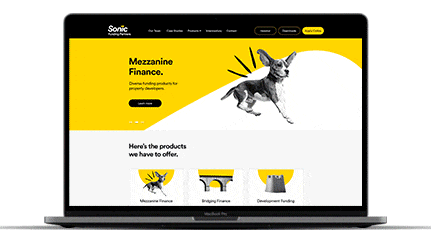Creative Website Design with Focus on SEO
Creative Website Design with Focus on SEO
Blog Article
Leading Tips for Producing an Impactful Website Layout That Transforms
To attain this, one should take into consideration a variety of aspects, consisting of comprehending the target audience, focusing on user experience, and maximizing for mobile platforms. The tactical usage of engaging call-to-actions and a well-defined aesthetic pecking order plays an important duty in directing users via their journey.

Understand Your Target Target Market
Understanding your target audience is basic to effective site layout, as it lays the foundation for producing an appealing customer experience. Determining that your users are, including their demographics, choices, and habits, allows developers to customize the web site's content, format, and performance to satisfy specific needs.
Conducting thorough market study is important in this procedure. Studies, interviews, and analytics can give valuable insights into customer expectations and pain points. By compiling this information, designers can create individual characters that represent different sectors of the target market, ensuring that design decisions are notified and relevant.
Moreover, understanding the target market helps in picking ideal style aspects such as shade schemes, typography, and imagery that resonate with customers. A website that talks straight to its audience cultivates a sense of link and trust fund, motivating longer visits and higher conversion rates.
Eventually, a user-centered technique to site design not only boosts user fulfillment yet likewise supports organization goals by driving interaction and commitment. By prioritizing the requirements and preferences of the target market, an internet site can efficiently serve its objective and attain wanted outcomes.
Prioritize Individual Experience
To improve the total performance of an internet site, prioritizing individual experience (UX) is important (Website Design). A properly designed UX ensures that site visitors can navigate the site easily, discover details rapidly, and engage with material meaningfully. This causes boosted customer fulfillment and greater conversion rates
Begin by applying intuitive navigating. Menus must be realistically structured, allowing users to situate crucial locations of the website with very little effort. Uniformity in layout components, such as color design and typefaces, promotes experience, which is vital for keeping individual interaction.
Additionally, take into consideration the packing rate of your internet site. A hold-up of just a couple of seconds can cause substantial drop-offs, as customers are much less most likely to await a slow-loading web page. Improving photos and maximizing code can enhance performance and keep site visitors.
By prioritizing customer experience, you not only create a much more satisfying setting for visitors however likewise strengthen your brand's integrity. Ultimately, an emphasis on UX is a financial investment in the long-term success of your website.
Enhance for Mobile Devices
Maximizing for smart phones is critical in today's electronic landscape, where an enhancing variety of individuals gain access to sites via Read Full Article mobile phones and tablets. A mobile-friendly layout not only boosts customer experience yet also plays a substantial function in boosting online search engine positions. To attain this, it is crucial to take on a responsive design that instantly changes to different display dimensions and alignments.

Packing speed is one more critical factor; mobile users are generally much less person and anticipate rapid access to details. By prioritizing mobile optimization, you make sure that your website remains competitive and successfully involves a broader target market.
Use Engaging Call-to-Actions
A web site's effectiveness usually pivots on its capacity to guide visitors toward wanted actions, making engaging call-to-actions (CTAs) crucial elements of design. CTAs function as the pivotal factors that guide customers to engage with the website, whether that means purchasing, registering for an e-newsletter, or downloading and install a source.
To develop reliable CTAs, clarity is critical. Usage succinct language that clearly communicates the action you desire the customer to take. Phrases such as "Start," "Sign Up Free," or "Shop Now" not just communicate urgency but also remove uncertainty. The positioning of CTAs is equally essential; they should be strategically placed throughout the web page to ensure they are quickly noticeable, especially in high-traffic areas.
Furthermore, take into consideration making use of directional cues, such as arrows or pictures, to assist customers toward these switches. By concentrating on these aspects, companies can substantially boost customer interaction, driving conversions and inevitably accomplishing their website's objectives.
Concentrate On Visual Hierarchy
Efficient internet site style relies greatly on a well-structured visual pecking order that guides customers with web content seamlessly. By arranging components this page in a manner that focuses on information, developers can boost customer experience and help with decision-making. This involves utilizing size, shade, contrast, and spacing tactically to draw attention to one of the most critical elements of a webpage.
Making use of larger font styles for headings and subheadings develops a clear distinction in between various areas, enabling individuals to check material easily. Furthermore, using contrasting colors for switches and calls-to-action can record customer attention and urge communication. Whitespace is another essential component; it stops clutter and allows individuals to focus on wikipedia reference essential messages without disturbances.
Images and graphics need to match the message while additionally sticking to the well established pecking order, enhancing the overall message (Website Design). Consistency in style components, such as color pattern and typography, more enhances the aesthetic pecking order, making navigating user-friendly

Conclusion
In conclusion, effective website layout demands a comprehensive understanding of the target audience, prioritization of customer experience, and mobile optimization. Inevitably, a well-executed website design serves as a critical component in driving user actions and achieving service purposes.
Report this page